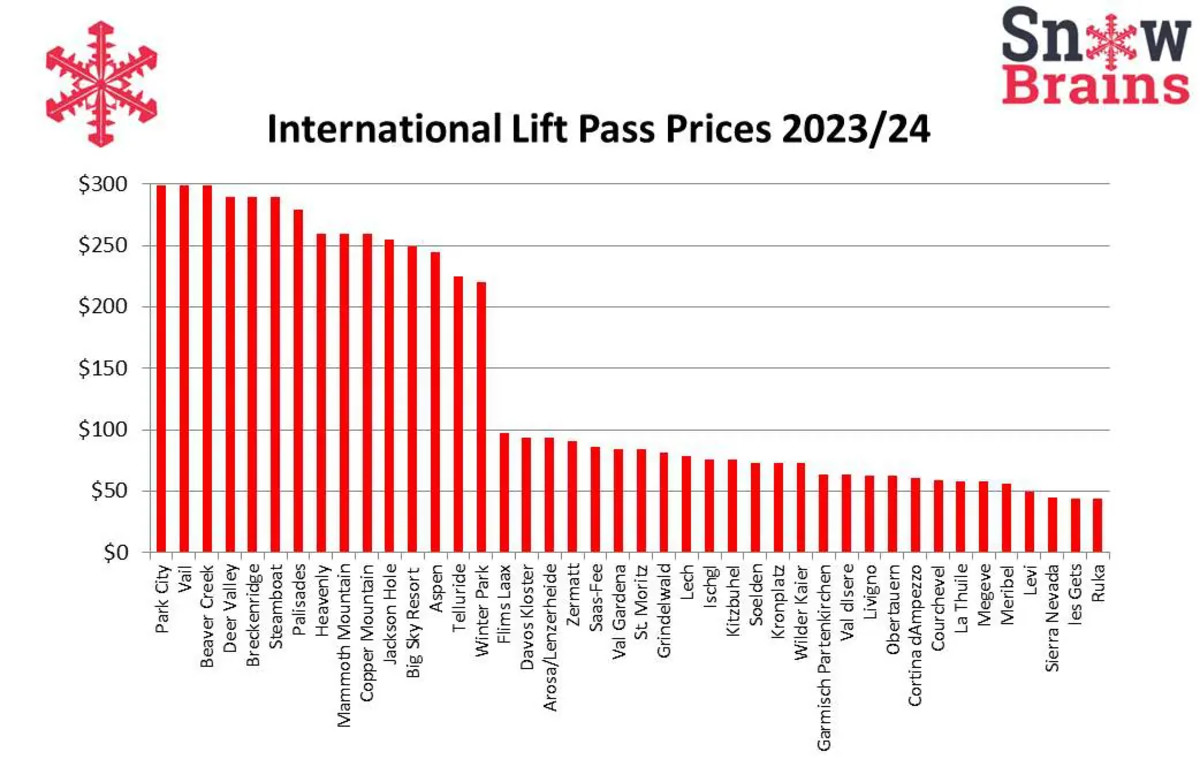Americans Pay Nearly Quadruple the Price of European Counterparts for Lift Tickets
In a recent report by SnowBrains, an unsettling contrast between the cost of lift tickets in European and American ski resorts has come to light. With premier destinations like Park City, Beaver Creek, and Vail in the United States approaching the $300 mark for lift tickets, concerns about affordability have taken center stage.
Among the resorts surveyed, the most budget-friendly options were Le Gets and Ruka, both located in Europe, according to the article on SnowBrains.
This striking price gap can be traced back to the distinctive histories and development trajectories of ski resorts on the two continents. In Europe, skiing has evolved organically over an extended period, with many resorts doubling as wellness destinations during the summer months, boasting the healing properties of pristine alpine air. This deep-rooted history has shaped the European ski industry’s approach to pricing and accessibility.

In contrast, the American ski industry took off relatively late, gaining momentum primarily in the 1950s. Its growth was driven not only by imported influences from Europe but also by corporate strategies, diverging from the organic development seen in European ski culture. Geographical and cultural differences further contribute to the price gap between the continents.
The factors influencing this price disparity are complex and interconnected. Here, we break down these elements for a clearer understanding:
1. Historical Development: European resorts have a long history dating back centuries, with skiing deeply embedded in their culture. In contrast, American resorts are relatively new and have adopted different business models and pricing strategies.
2. Corporate Influence: The American ski industry has seen significant corporate involvement, leading to a different approach to pricing and profit maximization compared to many European resorts, which are often locally owned and operated.
3. Geographical Factors: The geographical layout of ski areas in Europe, with multiple interconnected resorts, can influence pricing, while many U.S. resorts are standalone destinations.
4. Cultural Differences: Cultural attitudes toward skiing and outdoor activities differ between the continents, affecting demand and pricing.
5. Wellness Tourism: European resorts often cater to wellness tourists year-round, contributing to a diversified revenue stream that can offset lift ticket costs.
While these factors are intertwined and complex, they collectively shed light on the significant price differences between European and American lift tickets. As the ski industry evolves, discussions surrounding affordability and accessibility will likely remain at the forefront, prompting both resorts and skiers to reconsider the dynamics of snow sports in the modern era.
We’re always on the lookout for amusing, interesting and engaging snow-related videos to feature on our channels. Whether you’re a professional rider or just an amateur, we want to see your best footage and help you share it with the world. Submit your video for a chance to be featured on SNOWBOARDER and our social channels. Be sure to subscribe to our YouTube channel to watch high-quality snowboarding videos.
Don’t miss another headline from SNOWBOARDER! Subscribe to our newsletter and stay connected with the latest happenings in the world of snowboarding.










